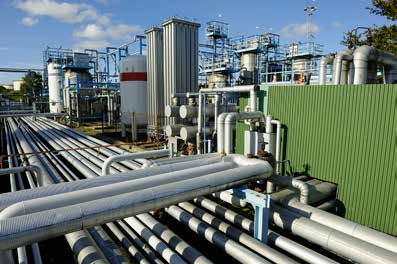 Beginning Oct. 1, 2017, California’s new improvements to process safety management (PSM) and hazard prevention take effect at the state’s 19 oil refineries.
Beginning Oct. 1, 2017, California’s new improvements to process safety management (PSM) and hazard prevention take effect at the state’s 19 oil refineries.
The new protections focus on anticipating, preventing and responding to refinery hazards that can harm workers and the surrounding communities.
“This is the most protective regulation in the nation for the safety and health of refinery workers and surrounding communities,” said California Department of Industrial Relations (DIR) Director Christine Baker. “This new regulation will ensure California’s oil refineries are operated with the highest levels of safety possible and with injury and illness prevention in mind.”
The DIR Occupational Safety and Health Standards Board last May approved the new refinery safety order to strengthen workplace safety and health.
Health and Safety Requirements
The elements in the revised PSM regulation require refinery employers to:
- Conduct damage mechanism reviews for processes that result in equipment or material degradation. Physical degradation, such as corrosion and mechanical wear, are common technical causes of serious process failures.
- Conduct a hierarchy of hazard controls analysis to implement the most effective safety measures when considering competing demands and costs when correcting hazards.
- Implement a human factors program, which requires analysis of human factors such as staffing levels, training and competency, fatigue and other effects of shift work, and the human-machine interface.
- Develop, implement and maintain written procedures for the management of organizational change to ensure that plant safety remains consistent during personnel changes.
- Utilize root cause analysis when investigating any incident that results in, or could have reasonably resulted in, a major incident.
- Perform and document a process hazard analysis of the effectiveness of safeguards that apply to particular processes and identify, evaluate and control hazards associated with each process.
- Understand the attitudes, beliefs, perceptions and values that employees share in relation to safety and evaluate responses to reports of hazards by implementing and maintaining an effective process safety culture assessment program.
What Prompted New Standards?
Motivation for amending the California OSHA refinery worker safety regulations and the California Accidental Release Prevention program resulted from the Aug. 6, 2012 hydrocarbon release and fire at Chevron’s refinery in Richmond, Calif.
An 8-inch steel pipe ruptured due to severe sulfidation corrosion, and had a low concentration of silicon, which is used to prevent corrosion. The pipe was connected to a crude oil distillation column, and employees were trying to determine the source of a gas oil leak in the pipe when it erupted, and a fire and chemical release ensued. Gas oil is a combustible hydrocarbon liquid.
Luckily, no one died, but six workers sustained minor injuries and 15,000 people in the community sought medical attention for respiratory problems.
Following a directive from California Governor Jerry Brown’s July 2013 report on refinery safety, CalEPA formed an Interagency Task Force on Refinery Safety in August 2013. The task force, which had members from local, state and national agencies, consulted with workers (including the USW), industry, non-governmental organizations, communities and local agencies over the next several years.
The task force’s key recommendations as well as the U.S. Chemical Safety Board’s (CSB) 2013 investigation report formed the basis for the new regulations.
CSB chairperson Vanessa Allen Sutherland endorsed the new rules and said they were “an example of the CSB driving chemical safety change.”
Some Rules Already Implemented
DIR said that most refineries in California have adopted some of the health and safety requirements over the past decade, and have seen significant improvement in their safety performance. But the major incidents that have happened posed a risk to workers and nearby communities, and caused disruption to fuel services. The new regulation represents a comprehensive safety performance standard for the state’s refining sector.
In addition, the California Environmental Protection Agency approved the strengthening of the California Accidental Release Prevention program, designed to prevent the accidental release of hazardous substances that could harm public health and the environment.
The USW welcomes the new rules to improve health and safety.
Mike Smith, a Local 5 staff representative and employee of the Chevron Richmond refinery, told the media: “Richmond could have been much worse—a lot of people could have died—and we took the lessons from that fire to heart in fighting for these new rules.”
“We are pleased that the state has taken a lead role on refinery health and safety, and are hopeful other states with a refining sector will follow,” said Kim Nibarger, head of the union’s National Oil Bargaining Program. “These practices will hold refiners accountable to worker and public safety, and will create a cleaner environment because there will be fewer emissions, flaring, spills, fires and explosions.
“The cost to comply is small when compared to the lives saved and the catastrophic incidents avoided,” he added.
